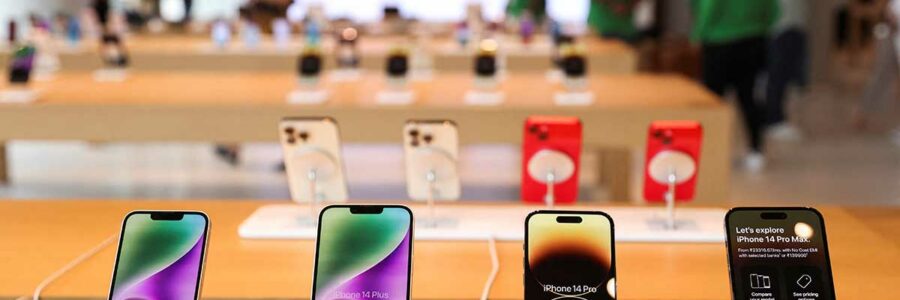
Made In India iPhones Are…
…far more expensive than those available in the US or in Dubai though Apple won’t pass on the higher cost of assembling the iPhone 15 and iPhone Plus to Indian customers.
Apple may not be passing on the higher cost of assembling the iPhone15 and iPhone Plus in India to its customers — compared to China as it is 13 per cent more on the freight on board (FOB) value.
It will also not hike the price of the phones to absorb the hefty dealer margins of 10 to 12 per cent it forks out in India. But even so the ‘Made in India’ phones are far more expensive than those available in the US or in Dubai.
A look at the numbers tells you an interesting story.
Despite the much-touted production-linked incentive (PLI) scheme, the disability between assembling the phones in India versus assembling them in China is still around 7 to 8 per cent on their FOB value, say sources involved in the production of iPhones.
Under the PLI scheme, Apple’s contract manufacturers get incentives ranging from an average of 4 to 6 per cent annually. While this makes some difference, it does not bridge the entire cost disability between the two countries.
Apple also faces a tariff disability in India compared to China. The phones assembled in India have a value addition of around 15 per cent plus.
A lot of the components, says sources involved in the assembly of iPhones in India, are imported and the government imposes basic customs duty on them.
The effective impact of these duties on the bill of material cost of an iPhone assembled in India is 7 to 8 per cent (or around 5 per cent on FOB value).
In China, though, Apple imports the components at zero duty. However, even this additional burden is not passed on to customers. An Apple spokesperson did not respond to queries on this issue.
What’s more, the retail margin to sell the Apple phones in India ranges from 10 per cent to 12 per cent, as they are sold through over 3,000 retailers, resellers and distributors across the country.
Apple has only two owned and branded stores in the country.
In contrast, in the US, the bulk of the phones are sold through telcos who bundle the phone with minutes of usage, or they are bought from the many Apple-owned stores that exist in the country.
So the cost of distribution is far lower than what it is in India.
Apple Inc absorbs all these additional costs while selling the Make in India phones in the domestic market as part of a long-term strategy to push sales in the country.
But what it cannot absorb is the steep 18 per cent GST on the phones. This is passed entirely on to the customers.
Apple always announces the global price for the phones in the US dollar. For example, it is $799 (Rs 66,349) for the iPhone 15 and $899 (Rs 74,653) for the iPhone Plus.
The price at which they retail in various countries is, however, different because of the differences in local taxes. And, it also depends on the depreciation or appreciation of the local currency against the dollar.
Hence, in India, the price, inclusive of the 18 per cent GST, is Rs 79,900 for the iPhone 15 and Rs 89,900 for the iPhone Plus.
One also has to take into account the depreciation of the rupee against the dollar of around 4 per cent between the launch of iPhone 14 last year and iPhone 15 this year.
But in the US the local tax or value added tax is a much lower 3 to 8 per cent, depending on which state you buy from. In Dubai the local tax is a flat 5 per cent.
Feature Presentation: Ashish Narsale/Rediff.com
Source: Read Full Article